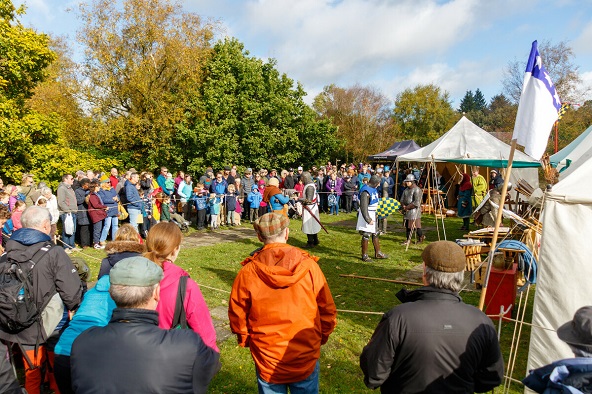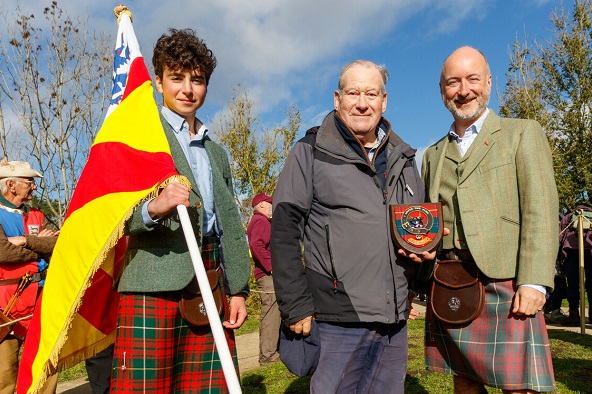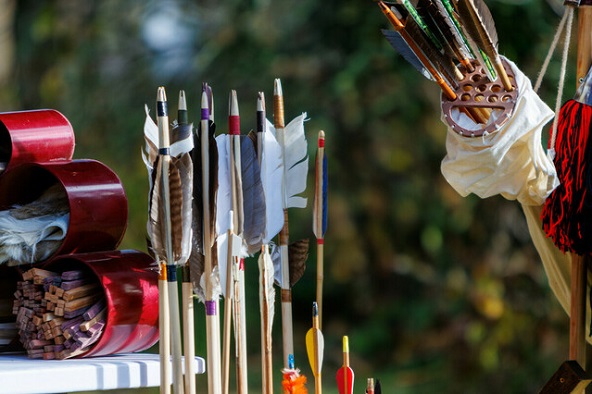Last year our Battle of Byland team oversaw the commemoration of this important historical event, which culminated in the unveiling of the impressive monument and interpretation board at Sutton Bank on the 700th anniversary of the battle – but the story doesn’t end there.


Having established where the main engagement took place, and seeing it appropriately remembered, the team are now planning the next phase, which they hope will involve archaeological investigation into the battle for the first time ever - but they need some help!
Project volunteer and researcher Harry Pearson explains -
“We are excited at the prospect of archaeology in relation to the Battle of Byland taking place, which will be the first time any such investigation has been undertaken. The work is contingent on a pending funding bid, but we are optimistic of the outcome.
The problem with the Battle of Byland, in common with all battlefields of the medieval era, is where do you look, and what do you look for? Although we have a very good idea of where the main fighting took place, in fact with more certainty than most medieval battles, just walking over the ground with metal detectors is unlikely to produce much by way of artefacts. There are a number of reasons for this, mainly because medieval battlefields were always thoroughly scavenged for articles of value in the aftermath (and all metal objects were deemed valuable), and anything that remained such as arrowheads are unlikely to have survived in the ground for 700 years other than in exceptional circumstances.
 However, there is a greater chance of finding the burial sites of those killed in the battle. We know that bodies were typically interred together in pits fairly close to where they fell, and as a number of the ancient chronicles refer to heavy casualties it follows that there are likely to be several burial sites in the proximity of the area where the fighting took place. A complicating factor in relation to the Battle of Byland is that apart from the main action at Sutton Bank, it is believed that significant skirmishes took place further afield in the ensuing rout as the English army disintegrated, leaving bodies distributed over a wider area. It may be the case therefore that apart from there being one or two main burial sites, there may be a number of smaller sites dotted over the landscape.
However, there is a greater chance of finding the burial sites of those killed in the battle. We know that bodies were typically interred together in pits fairly close to where they fell, and as a number of the ancient chronicles refer to heavy casualties it follows that there are likely to be several burial sites in the proximity of the area where the fighting took place. A complicating factor in relation to the Battle of Byland is that apart from the main action at Sutton Bank, it is believed that significant skirmishes took place further afield in the ensuing rout as the English army disintegrated, leaving bodies distributed over a wider area. It may be the case therefore that apart from there being one or two main burial sites, there may be a number of smaller sites dotted over the landscape.
Unfortunately none of the contemporary sources refer to specific burial locations, so it is difficult to know where to look. In such circumstances historians need to turn to more ‘anecdotal’ evidence, such as local legend and folklore. Such oral tradition is often founded on fact, and can be invaluable in the absence of written records.
Therefore, I would like to appeal to anyone who as any knowledge through such sources about the Battle of Byland, particularly in relation to where bodies might be buried, to get in touch and let me know. This might be a family legend, or a folk tale, or just something you once read but can’t remember where – anything really – please pass it on to me at h.pearson@northyorkmoors.org.uk
Please don’t think that anything you know is too vague, too insignificant, or not important enough to pass on. Every item of information in this regard is useful and worth hearing, and even the smallest clue is a valuable piece in the jigsaw of the bigger picture – please help us to find the bodies!”
